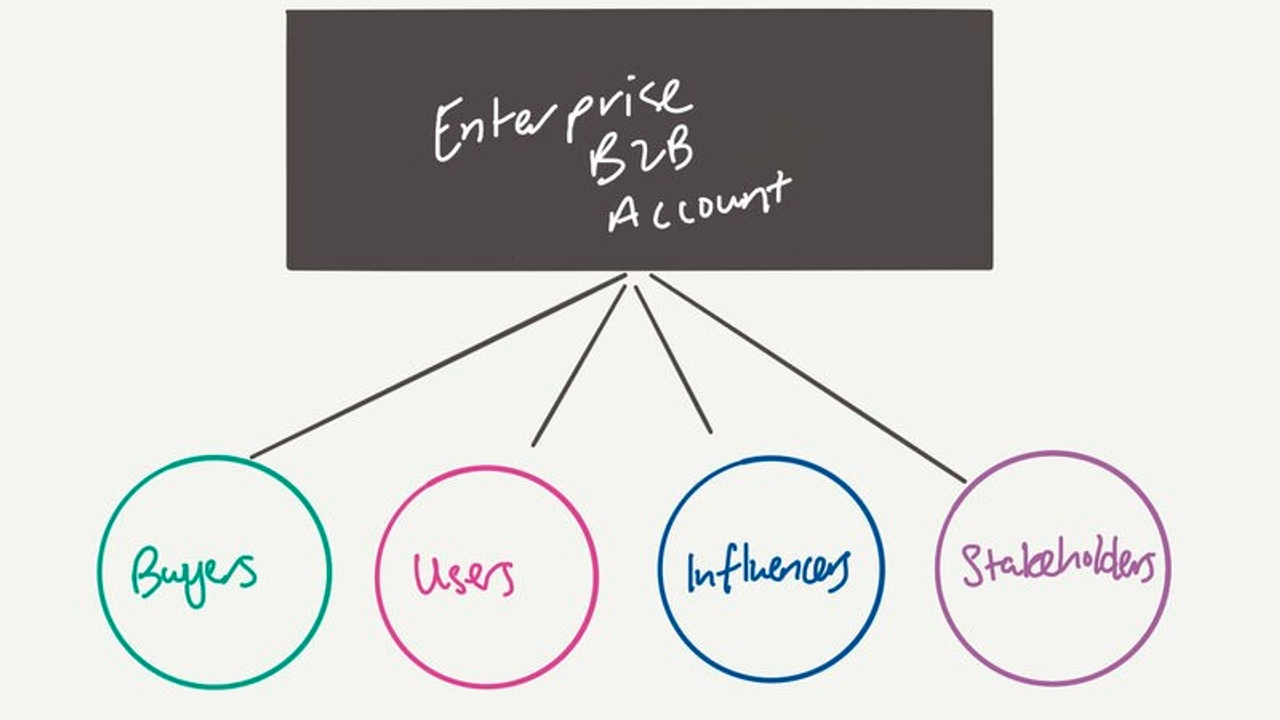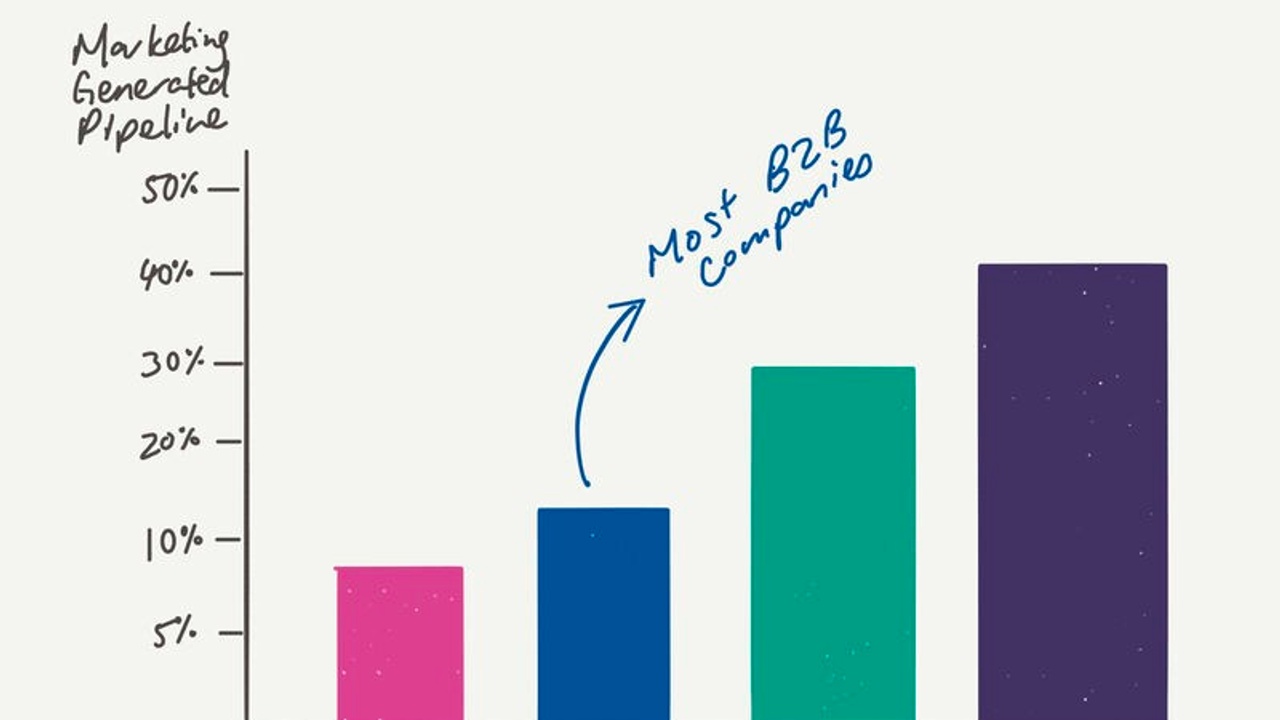Educational vs. Sales Nurture

The problem with most nurture sequences is that they are linear.
A customer fills out a form for an educational asset and enters an indefinite nurture across email, social and paid channels.
- Does a whitepaper download really warrant a 10-email sequence on all your features and benefits?
- Should a sales rep really follow up with anyone who attends a webinar?
This is where segmentation and context is critical. You need to meet customers where they are not where you want them to be. Nothing is more annoying than receiving sales emails when all you did was read an educational piece of content.
If someone only engaged with you at an educational level, keep your nurture educational. If someone engages with you at a sales level, only then should your cadences be sales-oriented.
This form of respect for the customer’s needs often breeds far more trust in a brand and product than non-contextual messaging. With this approach, customers are also far more likely to self-select into...
Single Customer Cash Flow

Analyzing Single Customer Cash Flow is more important than your CAC Payback Period.
While CAC Payback Period is a critical metric for companies to evaluate their marketing performance, it misses how cash actually flows in and out of the business.
For example, if a lot of your customers pre-pay for annual plans, you can receive cash for two years by month 13. This cash can help you break even on your CAC much earlier.
While it is true that pre-payments for annual plans are to be recognized across all 12 months of the year, from a cash flow standpoint you break even on CAC much earlier.
The better you understand the cash flow break-even point, the more aggressive you can be with your marketing efforts.
Fix Churn Before Demand Gen

Focusing on demand gen is a mistake when other fundamental pieces of your growth engine are broken.
The 4 essential areas to focus on:
- Fix Churn: Improve metrics like 90-day retention, LTV and net retention.
- Drive Expansion: Scale revenue from your existing customer base with cross-sell and upsells.
- Improve Adoption: Increase usage from customers with better onboarding as they try or buy your product.
- Increase Close Rates: Ensure your SQL to Close Rates are above 30%, ideally above 40%.
Once the above 4 are handled, focusing on improving demand gen becomes a lot easier.
You can spend a lot more money to acquire customers because your ACV/LTV is higher and you need fewer leads to reach CAC Payback Period.
Better Marketing Leads to Higher Margins

Better marketing leads to higher pricing and improved margins.
The more you invest into your messaging, positioning, content, education and thought leadership, the more your perceived value in the marketplace increases.
If your business is built to consistently deliver on this increased perceived value, it translates to increased actual value experienced by customers. This can come in the form of specific solutions, verticalized offerings, purpose-built products and much more.
The combination of the two creates a unique and differentiated position in the marketplace, where customers are willing to pay a premium because they expect a higher value to be delivered by your offerings.
Lead Scoring vs Journey Mapping

Lead scoring is the opposite of how customers want to be treated.
Under a lead scoring model, you try to equate a series of actions into the same level of intent as someone who announces that intent overtly.
But a blog post + webinar + email open does not equal a demo request.
Lead scoring is unnecessarily interruptive. Often, it means introducing a sales rep when the buyer is not ready to talk to have a sales conversation.
Instead, companies would be far better served to add content and educational assets to nurture prospects to help them self-announce their intent for a sales conversation.
This means:
- Having great top of funnel content to educate the prospect, even if it has nothing to do with your product
- Having great resources for them to interact with so you stay top of mind with them
- Having problem-aware content that helps them understand their options to solving their problems
- Having solution-aware content that helps them become develop a clear understanding...
Functional Strategy Comes From Company Strategy

Too many teams / sub-functions think of their work in isolation. This leads to siloed and dysfunctional organizations.
Your content strategy needs to be a subset of your overall marketing strategy, which needs to be a subset of your overall growth strategy, which needs to be a subset of the overall company strategy.
This is why starting from the company strategy / outlook / plans is the best way to ensure the success of your function as a leader and increase your impact across the organization.
Ask questions like:
1) What are our revenue targets? How fast do we need to grow?
2) What are our financial constraints? (Burn rate, EBITDA etc.)
3) What growth opportunities are the biggest focus for us as an organization? (New logos? Expansion? M&A? Pricing? New products?)
4) What is required from all the key teams (product, marketing, sales, CS, ops) to deliver on our biggest opportunities?
5) How can our respective function contribute to what is required?
Thinking like this changes how a...
Bottom-Up Enterprise B2B GTM

Taking a top-down approach to Enterprise B2B accounts limits possibilities on Go-To-Market because TAM is often limited to a small set of very valuable accounts.
You need to expend incredible amounts of acquisition dollars to land a $100K-$1M+ deals. Often this work is led by Sales since 1 to 1 outreach is required.
Marketing ends up focusing on ABM to drive demand by Marketing supporting the 1 to 1 outreach with 1 to 1 content and messaging.
While this is what is required in a lot of cases, the problem of limited TAM can be solved by expanding the universe of people who actually drive decision-making for an enterprise account.
This means:
1) Marketing to Buyers, Users, Influencers and Stakeholders of your solution so that a far larger audience can then be targeted to drive demand more efficiently.
2) Building a product that can be adopted by individual users who can collectively influence the buying decision of the overall enterprise organization
3) Targeting individual users via...
Growing Your Brand vs Rebranding

Rebranding is more expensive than companies and their marketing teams realize.
Every year, Marketing teams invest hundreds of thousands of dollars into changing the brand, logo, website, tagline etc. for companies that likely don’t need the change to begin with.
Along the way, political capital is wasted, VPs of Marketing get fired and current brand equity is squandered.
Most importantly, revenue does not go up.
The bigger the company, the more the waste. E.g. A Fortune 500 company doing a rebrand can cost millions of dollars in new marketing collateral, website changes, building signs, retraining of sales teams etc.
At the same time, smaller companies doing rebrands can waste limited resources on a rebrand that doesn’t meet the ultimate goal of driving growth.
Reasons cited for these brand overhauls include:
-Increased M&A activity and needing to tell a bigger story
-Current branding not matching what the company really does / offers
-Needing to...
Marketing Generated Pipeline Maturity

Most B2B companies find themselves over-relying on Sales to generate the bulk of their pipeline.
In such companies, Marketing doesn't have enough budget and does not provide nearly enough coverage to drive revenue.
These are the companies where cold calling, events, relationships are what grow the business. These are also often the companies where Sales reps miss quota more often than not.
The key is to get Marketing Generated Pipeline into a healthy range (at least at 30%). In some cases, this number can be as high as 70-80%.
That's how you know the market is actually coming to you inbound when it needs a specific pain point to be solved. They're aware of you, they've read your content, they trust you as an authority and resource.
It's also how you know that your brand has enough value in the marketplace to win business that does not depend on you dialling to dollars to succeed.
Customers Lead Content and Demand Gen

Marketers who over-index on SEO or Paid Search often (incorrectly) rely on “search volumes” and “keyword difficulty” as their guides on what to prioritize.
This leads to companies fighting for market share like a commodity, inevitably inflating CAC and Payback Period metrics.
Instead, starting with Differentiation as the goal changes how you Go-To-Market:
- You invest heavily into understanding market dynamics and customer pain points
- You build a strategic narrative to educate the market on how to resolve those pain points while separating yourself from the noise
- You create content to educate buyers on the strategic narrative at every stage of their journey
- You leverage demand generation channels and campaigns to scale distribution of the content to your ideal buyers
This approach focuses on the customers and the message, not search volumes or keyword difficulty.
It brings down CAC and improves your Payback Period.
It also opens up infinite scale...



